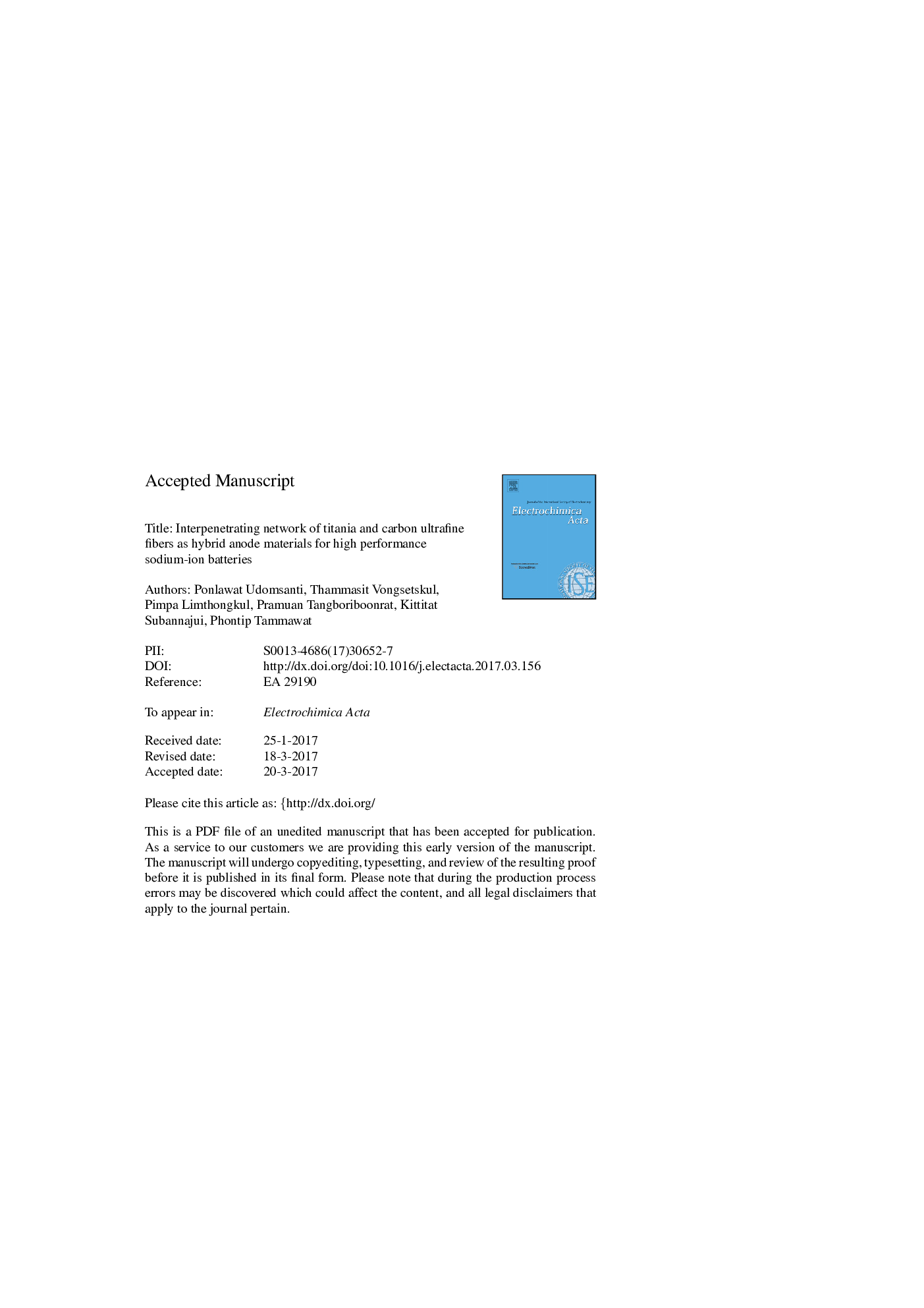| Article ID | Journal | Published Year | Pages | File Type |
|---|---|---|---|---|
| 4767197 | Electrochimica Acta | 2017 | 25 Pages |
Abstract
Interpenetrating networks (IPNs) of titania, having high cycling stability and rate capability, and carbon, having high electrical conductivity and capacity, ultrafine fibers were fabricated by a co-electrospinning technique in opposite directions. The IPN structure promoted a contact between titania and carbon fibers, minimized strain during ion de-insertion, and prevented agglomeration that shortened the cycling stability. Images from scanning electron microscopy with backscattering electron detector and X-ray diffraction spectra confirm the existence of the IPN structure of both types of fibers. Thermogravimetric analysis and Raman spectroscopy of the composite fibers reveal their 37Â wt% of titania content and 1.2 ratio between disorder and graphitic carbon (ID/IG). A galvanostatic curve displays stable reversible capacities of 202 and 247Â mA h gâ1 for charge and discharge after the fifth cycle at a current density of 25Â mAÂ gâ1. The material had a superior discharge capacity of 151 and 123Â mA h gâ1 at 125 and 250Â mAÂ gâ1, respectively. Moreover, the discharge capacity could be maintained at 134Â mA h gâ1 after 100 cycles at 125Â mAÂ gâ1 with a Coulombic efficiency of more than 98%, presenting a long life cycle of batteries. Therefore, the prepared IPN composite fibers can be an efficient anode for sodium-ion batteries.
Related Topics
Physical Sciences and Engineering
Chemical Engineering
Chemical Engineering (General)
Authors
Ponlawat Udomsanti, Thammasit Vongsetskul, Pimpa Limthongkul, Pramuan Tangboriboonrat, Kittitat Subannajui, Phontip Tammawat,
